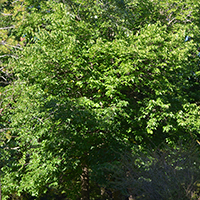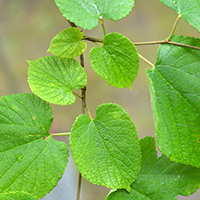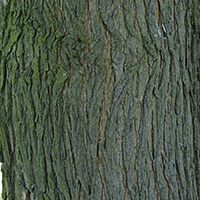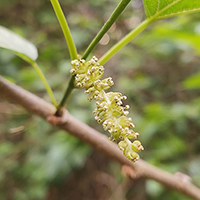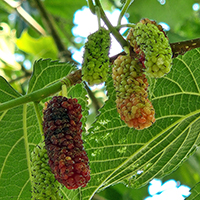What red mulberry looks like
Size and shape
- Reaches 20 metres high.
- Trunk reaches up to 75 centimetres in diameter.
Leaves
- Coarsely toothed yellowish-green leaves (8 to 24 centimetres).
- Leaves grow in different shapes on the same tree.
- Undersides are hairy between leaf veins.
Bark
- Reddish brown with long flaky plates.
Flowers
- Small yellowish- to reddish-green flowers develop at the base of leaf stalks.
- Bloom before and with leaves.
Fruit
- Red to dark purple berries that resemble narrow blackberries (20 to 30 millimetres).
- Sweet edible fruit ripens in summer.
Where red mulberry is found
Red mulberry trees are a species at risk in Ontario. They’re found in the Carolinian Zone, the southern-most portion of Ontario, as far north as Hamilton.
Find out what we are doing to protect red mulberry by reading the recovery strategy.
What you need to know to grow red mulberry
- Moisture: grows best in moist, well-drained soils.
- Soil: grows best in neutral to alkaline loamy soil.
- Shade: grows best in full sun.
- Caution: crushed red mulberry fruit can cause staining.
Benefits and uses of red mulberry
Wildlife benefits
Red mulberry fruit is a food source for many species, including:
- fox
- squirrels
- songbirds
Commercial uses
Red mulberry fruit can be used to produce:
- preserves
- cakes
- wine
- juice
Red mulberry wood can be used to make fenceposts and agricultural implements.
Fun facts about red mulberry
- Red mulberry is the only native mulberry species in Canada.
- Preserves made from red mulberry fruit have a short shelf life.
Updated: January 10, 2024
Published: July 17, 2014
